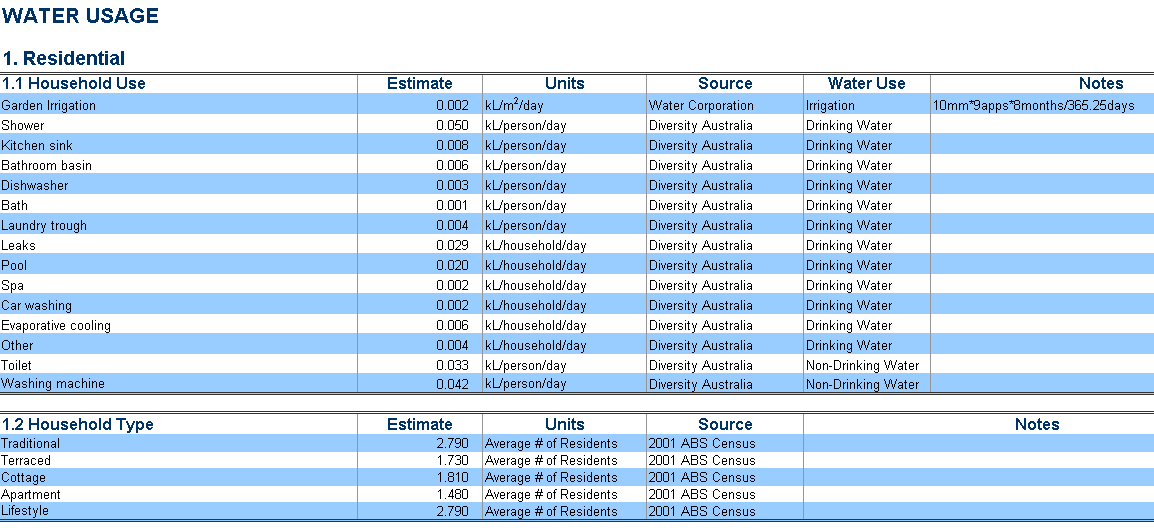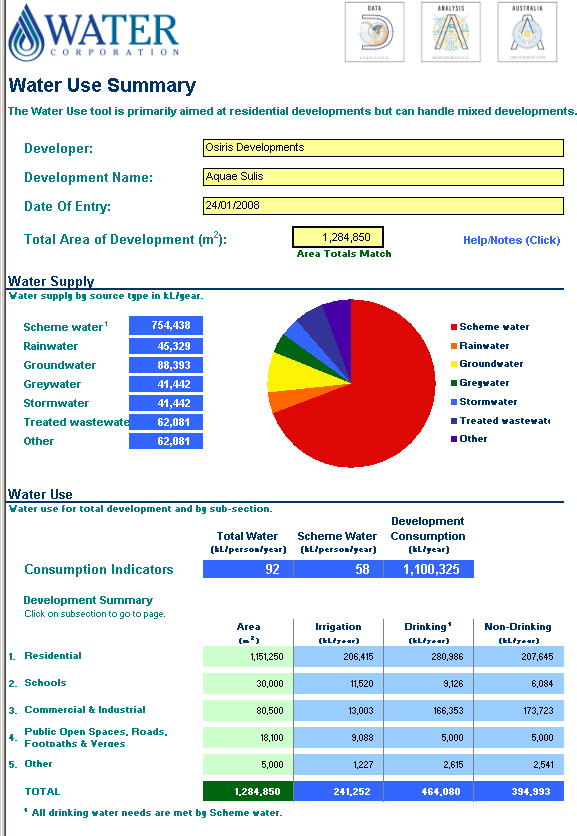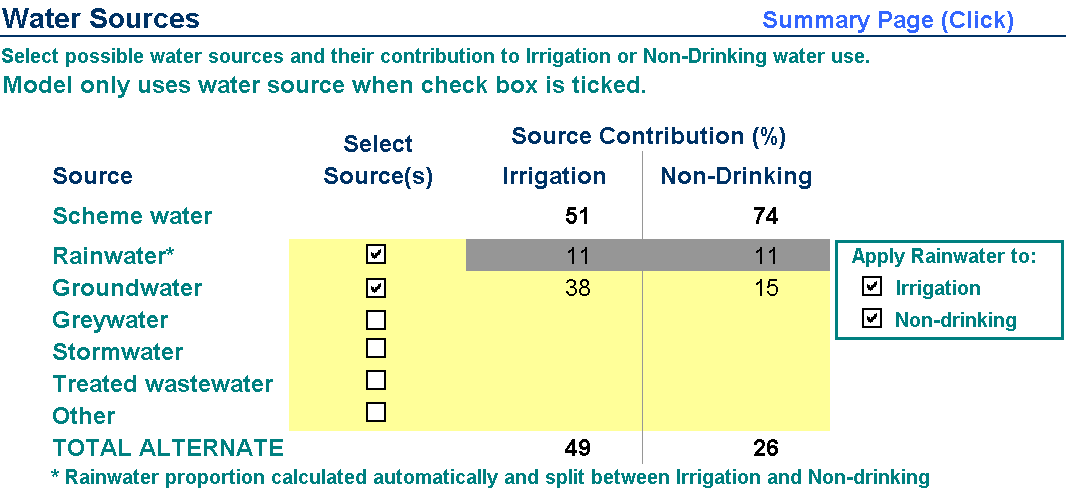Alternative Water Sources
Overview
The Problem:
How can alternative water sources help reduce the need for (potable) drinkable water in new developments?
The Data Analysis Australia Approach:
To develop a tool to assist developers in profiling water use and to specify how some of this demand is to be met by alternative water sources.
The Result:
A spreadsheet model with an easy to use interface that summarises water use and supply for a new development.
The Problem
As Australia faces the immediate problem of drought and the longer term challenge of climate change, it becomes critical to consider both all possible sources of water and the more appropriate uses of water. These two issues are closely related. Historically water utilities in Australia have supplied high quality "potable" or drinkable water, but at least half of this is used where a lower quality would suffice - watering gardens for example. Systems that supply appropriate quality water to these applications reduce the pressure on premium water supplies.
The alternative sources of water include groundwater, rainwater collected from domestic roofs and recycled waste water. In Australia these are increasingly used at the household level but they are potentially much more efficient on a larger scale. However, once infrastructure has been built it is expensive and difficult - often impossible - to then utilise alternative water sources. It is much more viable during the development phase.
In Western Australia, the Water Corporation has three key questions relating to alternative water sources:
1. What is the role of alternative water sources in meeting the community's water needs?
2. How is this service best delivered and at what scale?
3. Who is best placed to deliver the service?
The Water Corporation required a tool to work collaboratively with land developers, exploring the role of alternative water sources. This will enable the Water Corporation to run cost comparisons on whether the alternative water schemes present a better community spend than the conventional water servicing options.
Data Analysis Australia has had many years experience in modelling water consumption. It was a natural step for the Water Corporation to commission us to create a tool to assist land developers estimate the contribution alternative water sources have in meeting the overall water demand for a development.
The Data Analysis Australia Approach
Data Analysis Australia, working closely with the Water Corporation, set about developing a tool that would assist in profiling anticipated water use for a development. We recognised the need to consider both the land uses in a development - residential, school, parks and commercial - and the types of water usage of each component. This led to a three dimensional model, considering land use, water uses and water sources.
Key to the effectiveness of the tool is the parameters and assumptions that go into the model to estimate the water usage of the development. These parameters came from a variety of sources either researched by Data Analysis Australia or supplied by the Water Corporation. All were detailed in the model allowing the Water Corporation to update them as better information or more up to date data become available. Data Analysis Australia felt that this was key to the longevity of the model's usefulness.
While the model had several layers of complexity, it needed to be simple to use - a feat achieved by refining the model through feedback from the Water Corporation. Data Analysis Australia designed a user interface that minimised the data required to be input, and which provided basic checks for validity. For example, it checked that the areas of the various types of usage added up to the total development area.
Just as important is the output. The tool had to deliver an output that was readily accessible and useable by the end user to assist them in estimating the contribution of alternative water sources and the associated financial implications.


The Result
The result was an attractive, easy to use spreadsheet model delivered in Microsoft Excel - a tool that received very positive feedback from the Urban Development Institute of Australia (UDIA) when presented to them by the Water Corporation in November 2007.
The tool also gave the Water Corporation the opportunity to engage the industry directly in accuracy and relevance of the assumptions used. This helped in ensuring the calculation of alternative water supply contribution was consistent and realistic.


February 2008
